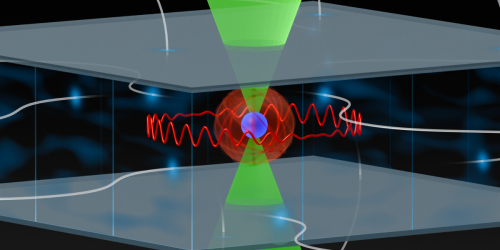Spinning Up Rydberg Atoms Extends Their Life
Rydberg states are highly excited atomic states that are promising for quantum computing and quantum simulation. However, the short lifetimes of these states, typically between 10 and 100 microseconds, pose fundamental limits to these applications. One way to increase a Rydberg atom’s lifetime is to place its excited electron into a so-called circular state. Placing strontium atoms in one such state at room temperature, Florian Meinert from the University of Stuttgart, Germany, and colleagues record a lifetime of 2.5 milliseconds, more than twice as long as that of the longest-lived room-temperature Rydberg atoms demonstrated to date.
In a Rydberg atom, the outer electron occupies a highly energetic orbital. Circular states are those with the largest possible angular momentum. “The orbit of the circular Rydberg atom is a thin ring, almost mimicking the Kepler orbit of a planet circling its parent star,” Meinert says. Such states are generally long lived because selection rules inhibit their decay to lower energy states.
To generate circular Rydberg states in an array of ten strontium atoms, the researchers perform multiple steps that include exciting the atoms with light and manipulating them with electric fields and radio waves. A further lifetime boost is obtained by surrounding the atoms with capacitor plates that suppress detrimental blackbody emission.
An additional benefit of the experiment is the use of an alkaline-earth atom (strontium), which has a second outer electron that can be manipulated with light independent of that used for the Rydberg electron. In the future, this second electron could be used for quantum simulation operations in a larger array of atoms.
–Michael Schirber
Michael Schirber is a Corresponding Editor for Physics Magazine based in Lyon, France.
References
- C. Hölzl et al., “Long-lived circular Rydberg qubits of alkaline-earth atoms in optical tweezers,” Phys. Rev. X 14, 021024 (2024).




